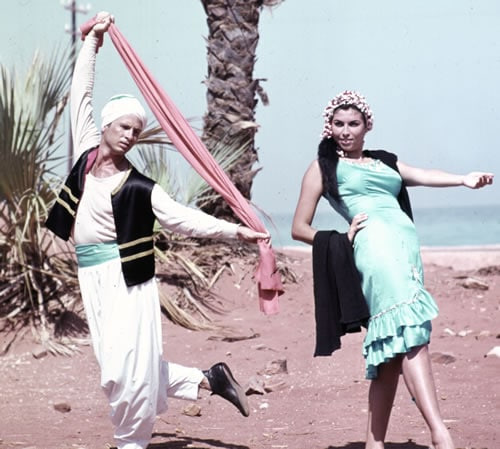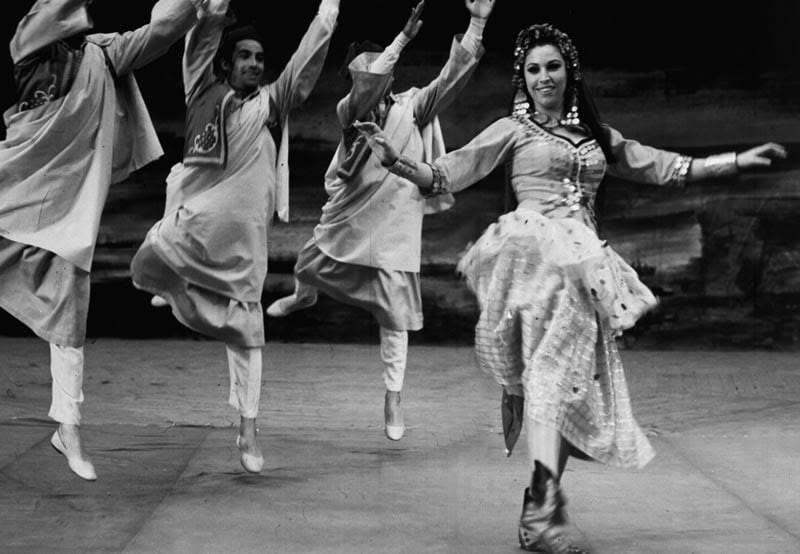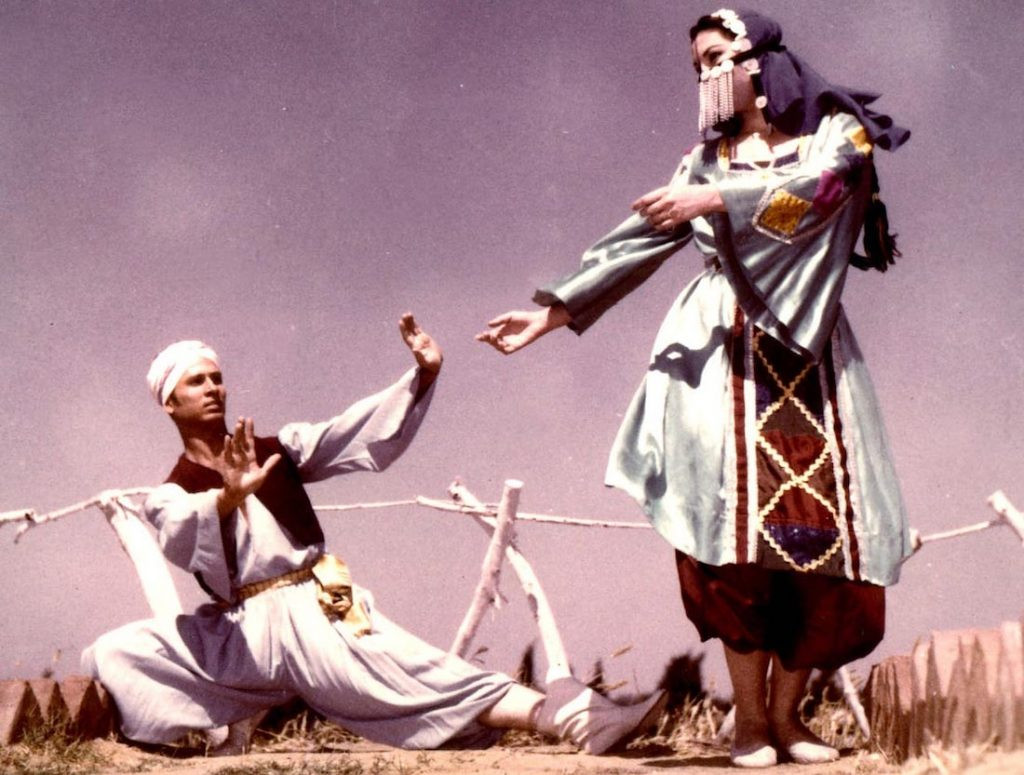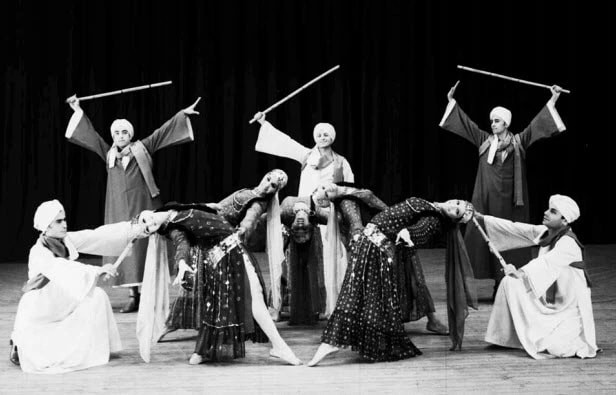Belly dance, a captivating art form celebrated worldwide, finds its spiritual home in Cairo. Curious about its origins? At ten-dance.com, we’ll explore the rich history of this dance, tracing its evolution both within and beyond Egypt’s borders. We’ll uncover how it intertwines with ancient rituals, European fascination, and modern interpretations, offering a comprehensive understanding of belly dance for enthusiasts of all levels. Delve into this intriguing journey to discover the cultural roots and artistic transformations of this mesmerizing dance form, and unlock the secrets behind its enduring appeal. Explore the allure of belly dance, its historical roots, and modern interpretations with ten-dance.com, your gateway to dance discovery.
1. What Are The Ancient Origins Of Belly Dance?
While definitive proof remains elusive, belly dance’s roots may intertwine with ancient fertility rituals in Egypt and Mesopotamia. The captivating idea of continuity from ancient rituals dedicated to goddesses like Isis and Hathor in ancient Egypt and Ishtar in Mesopotamia to modern belly dance is intriguing. According to the Metropolitan Museum of Art, imagery from ancient Egypt shows dancers in poses that bear a striking resemblance to modern belly dance techniques. However, concrete evidence linking these ancient practices directly to contemporary belly dance remains scarce.
1.1 Can Similarities Be Found Between Ancient Art and Modern Belly Dance?
Yes, similarities exist, but they’re open to interpretation. With imagination, we can find similarities in the iconic representations of music and dance from thousands of years ago, such as the frescoes from the tomb of Nebamun, dating back to 1350 BC. These depictions show dancers with sinuous movements and postures that evoke the fluidity and grace of belly dance. The British Museum houses a collection of these frescoes, allowing researchers and enthusiasts to examine these potential connections firsthand.
1.2 Is There Written Evidence of Belly Dance from Ancient Times?
Unfortunately, no. Direct written accounts or detailed descriptions of dance techniques from these ancient periods are lacking. Our understanding relies primarily on visual representations and interpretations, leaving room for speculation.
2. How Did European Travelers Influence the History of Belly Dance?
The 19th century marks a more traceable beginning for belly dance history, thanks to European travelers who arrived in Egypt following Napoleon’s campaign in 1798. These accounts offer insights into the dance forms prevalent at the time. According to a study by the University of Cambridge, these travelers’ writings and illustrations provide valuable, though often biased, perspectives on early forms of belly dance.
2.1 What Were the Two Main Types of Dancers in 19th Century Egypt?
Travelers distinguished between gawazi and awalim. Gawazi dancers were associated with the nomadic traditions of the Romani people and were often viewed as immodest for performing in public without veils. Awalim, on the other hand, were highly skilled women who not only danced but also recited poetry, sang, and played instruments.
2.2 How Did the Status of Gawazi and Awalim Differ?
Awalim enjoyed higher status and were hired to perform at events and celebrations for the upper classes. Gawazi, often associated with Romani traditions, faced societal disapproval and were sometimes even outlawed from public performance.
2.3 How Did Laws and Tourism Affect the Evolution of Belly Dance?
In 1834, General Muhammad Ali prohibited gawazi from dancing in public. Decades later, the prohibition was lifted, but a tax was imposed for street performances. This led gawazi to perform in clubs and cafes to avoid the tax. The rising demand for tourism entertainment also led awalim to perform in cafes, clubs, and halls, such as the iconic El Dorado in El Azbakeya Gardens in Cairo.
3. What Is the Origin of the Term “Belly Dance”?
The history of the term “belly dance” reveals much about the dance’s own history. In Arabic, the name for belly dance is raqs sharqi (رقص شرقي), which means “oriental dance”. The English term “belly dance” comes from the French danse du ventre. According to the Oxford English Dictionary, the term gained popularity in France after the 1889 Exposition Universelle in Paris.
3.1 Why Was the Exposition Universelle Important for Belly Dance?
The Exposition Universelle was a platform to showcase “other cultures” from non-Western countries colonized by France. This event highlighted France’s geopolitical power and presented these cultures as exotic and in need of Western order. The “Rue du Caire” (Cairo Street) recreation was one of the most popular attractions, especially for its dance performances.
 poster de exposicion de egipto
poster de exposicion de egipto
3.2 How Did the Term “Belly Dance” Spread in the West?
The term danse du ventre proliferated in French press coverage of the exposition. The concept of a “belly dance” spread in the West, particularly in the context of international fairs.
3.3 What Was the Significance of the 1893 World’s Columbian Exposition in Chicago?
The 1893 World’s Columbian Exposition in Chicago marked a milestone in the visibility of the English term “belly dance”. Sol Bloom, an American entertainment entrepreneur, promoted the name to market an exposition similar to the Paris fair, including belly dance.
3.4 How Did Early Cinema Depict Belly Dance?
In 1896, a belly dance performance was recorded in a short film called Fatima’s Coochie Coochie Dance. Although the dancer’s identity remains uncertain, the film showcased elements like shimmies and finger cymbals that were used in Egypt at the time. The film was even censored in the puritanical United States due to its perceived indecency.
4. Is Belly Dance Entirely a Western Invention?
Belly dance is not entirely an Egyptian folk dance, but it is not entirely a creation of Western fantasy about the Orient. It is both at the same time. The dance evolved through interactions between Egyptian traditions and Western perceptions.
4.1 How Did Orientalist Imagination Influence Belly Dance?
European Orientalist imagination, fueled by exotic and sensual images from travelers’ accounts, created a fascination with belly dance. These images, produced mainly in the 18th and 19th centuries, fostered an interest in distant lands and sensory experiences.
4.2 How Did Tourism Shape Belly Dance in Cairo?
In the late 19th and early 20th centuries, tourist demand led to the proliferation of shows in Cairo, such as the Azbakeya cafe concerts and the Casino de Badia Masabni. These venues adapted the dance for the stage and catered to tourist expectations, often linked to erotic entertainment.
4.3 Did Egyptian Folk Dances Continue Alongside Belly Dance?
Yes, while belly dance was developing under Western eyes, the folk dances of Egypt continued their course in parallel. They remained integral to local traditions and celebrations.
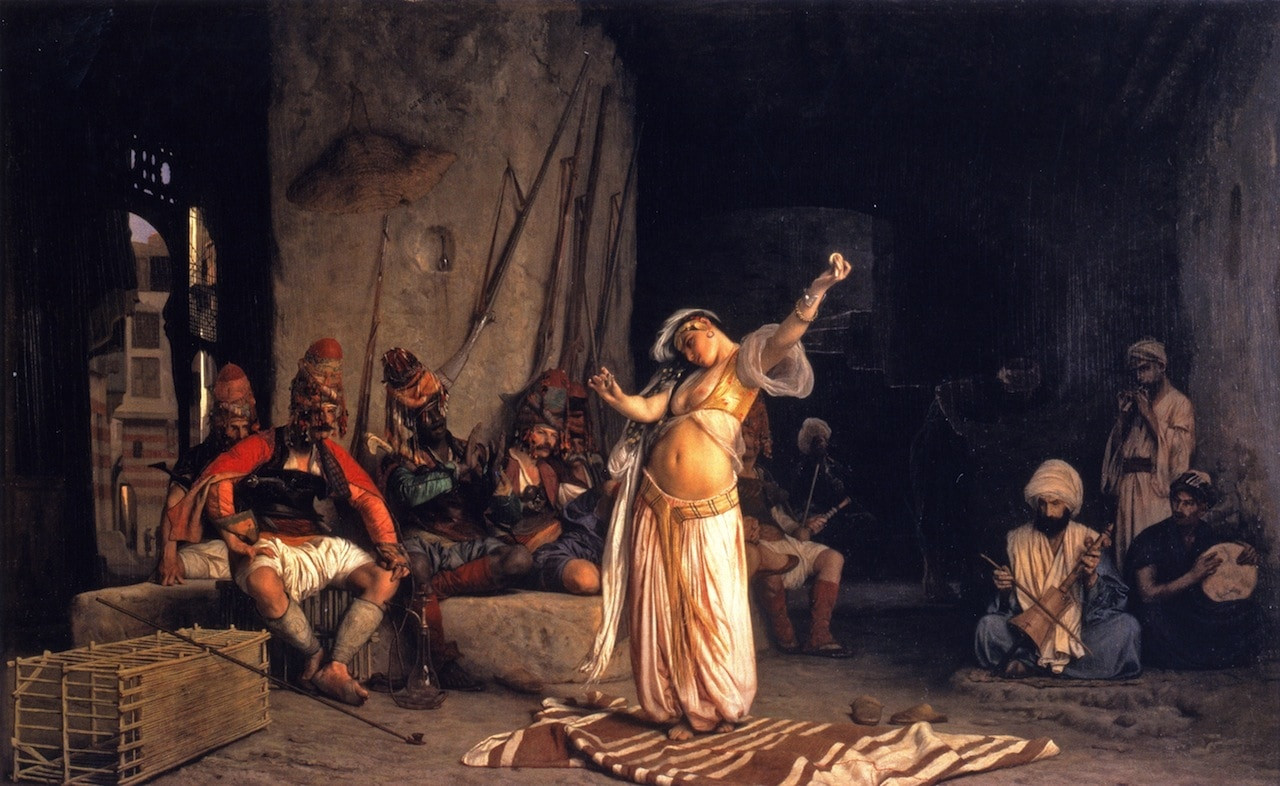 pintura de Jean-Léon Gérôme
pintura de Jean-Léon Gérôme
5. How Did Egyptian Cinema Influence Belly Dance?
From the 1940s to the 1960s, during the Golden Age of Egyptian cinema and entertainment, belly dance became a cultural reference in the Arab world. It became an essential musical number in films and created stars like Tahia Carioca and Samia Gamal, both disciples of Badia Masabni. According to the American University in Cairo Press, the Golden Age of Egyptian cinema played a crucial role in popularizing belly dance and shaping its modern identity.
5.1 Who Were Some of the Notable Figures in Egyptian Belly Dance?
Legendary figures like Tahia Carioca and Samia Gamal rose to prominence during this era. Tahia Carioca even performed at the wedding of King Farouk in 1936, solidifying her status as a cultural icon.
5.2 What Was Mahmoud Reda’s Contribution to Egyptian Dance?
Mahmoud Reda, along with Farida Fahmy and the Reda Troupe, explored the folk dances of Egypt and created a new dance language and style for the theater. They incorporated elements from other genres, such as ballet, to create innovative performances.
5.3 How Did Belly Dance Spread to the United States and Latin America?
From the 1960s onward, belly dance schools expanded in the United States, and later in Latin America in the 1990s. This led to the emergence of new styles, such as tribal fusion and fantasy styles.
6. How Does Belly Dance Fit Into Egyptian Society?
Belly dance, like many other traditional dances, has changed according to the parameters of globalization. It has moved from informal folk dances to technical and formal teaching, structuring, and professionalization. In Egypt and other countries like Lebanon and Turkey, both formal and informal practices coexist.
6.1 How Is Belly Dance Practiced Professionally in Egypt?
Professionally, belly dance is performed in dance schools, theaters, clubs, weddings, and other celebrations. International festivals like the “Ahlan wa Sahlan Festival” offer workshops, masterclasses, presentations, and competitions. In Egypt, a state-issued license is required to dance belly dance professionally.
6.2 How Does Belly Dance Align with Modesty in Egyptian Society?
Belly dance is traditional in Egypt because it is performed in socially appropriate places and moments. This means performing in a family environment or a trusted gathering during celebrations or festive occasions.
6.3 What Is the Intention Behind Belly Dance in These Settings?
In these settings, dance is improvised, without stage costumes, and has a playful tone. According to dance anthropologist Najwa Adra, the practice of a dance that includes sensual movements functions as a form of expression and liberation from the decorum required in public.
6.4 What Does Modesty Signify Within the Dance?
When the dancer feigns modesty by covering her eyes while moving her pelvis, she is making a meta-statement about this dance that is anything but modest. The intention, in this case, is not to seduce but to express joy and celebration within a safe and trusted environment.
7. Why Is Cairo Considered a Global Center for Belly Dance?
Cairo is seen as a world center for belly dance—a pilgrimage destination for belly dancers. To summarize:
7.1 The Reality of Egyptian Folklore
Belly dance had its roots in the reality of Egyptian folklore with its diverse influences.
7.2 The Orientalist Fantasy
It was influenced by the Orientalist imagination of the West, which exaggerated certain traits it saw as opposite to its own culture.
7.3 The Cultural Affirmation
It became firmly established in Arab and Egyptian culture through cinema and continued to grow and expand throughout the world, changing and creating new styles to this day.
8. Who Is Belly Dance For?
Whether you’re a curious beginner or an advanced dancer, belly dance welcomes all. From improving technique to exploring history, there’s something for everyone in this art form. According to a survey by Dance Magazine, belly dance attracts a diverse range of participants, united by a shared passion for movement and self-expression.
8.1 How Can Beginners Start Learning Belly Dance?
Beginners can start by taking introductory classes or workshops. These classes focus on fundamental movements and techniques, providing a solid foundation for further exploration.
8.2 What Resources Are Available for Intermediate and Advanced Dancers?
Intermediate and advanced dancers can benefit from specialized workshops, intensive training programs, and online resources. These resources offer opportunities to refine technique, learn new styles, and connect with experienced instructors.
8.3 How Can Professionals Find Opportunities in the Belly Dance World?
Professional dancers can find opportunities through auditions, workshops, and networking events. Joining professional organizations and attending industry events can help dancers connect with potential employers and collaborators.
9. What Are the Benefits of Learning Belly Dance?
Learning belly dance offers a multitude of benefits, from physical fitness to cultural enrichment. According to the Mayo Clinic, belly dance can improve muscle tone, flexibility, and coordination.
9.1 What Are the Physical Benefits of Belly Dance?
Belly dance can improve posture, balance, and cardiovascular health. The movements engage core muscles and promote flexibility in the spine and hips.
9.2 What Are the Mental and Emotional Benefits of Belly Dance?
Belly dance can boost self-esteem, reduce stress, and promote body positivity. The dance provides a creative outlet for self-expression and fosters a sense of community among dancers.
9.3 How Does Belly Dance Promote Cultural Awareness?
Belly dance exposes dancers to Middle Eastern music, history, and traditions. Learning about the origins and cultural context of the dance can deepen appreciation and respect for different cultures.
10. How Can You Find Belly Dance Classes and Events in the USA?
Finding belly dance classes and events in the USA is easier than ever, thanks to online resources and local communities. Websites like ten-dance.com offer comprehensive listings of classes, workshops, and performances across the country.
10.1 What Are Some Popular Cities for Belly Dance in the USA?
Cities like New York, Los Angeles, and Chicago have vibrant belly dance scenes with numerous studios and performance venues. These cities attract dancers from all over the world and offer a diverse range of styles and instructors.
10.2 How Can You Connect with the Belly Dance Community in Your Area?
Connecting with local belly dance communities can enhance your learning and provide opportunities for collaboration and performance. Online forums, social media groups, and local dance organizations can help you connect with fellow dancers in your area.
10.3 What Are Some Notable Belly Dance Events in the USA?
Several notable belly dance events take place in the USA each year, including festivals, workshops, and competitions. These events offer opportunities to learn from world-renowned instructors, showcase your skills, and immerse yourself in the belly dance community.
FAQ: Unveiling the Mysteries of Belly Dance
1. Is belly dance a religious dance?
No, belly dance is not inherently a religious dance. While it may have ancient roots in fertility rituals, it is primarily a form of entertainment and artistic expression.
2. Is belly dance only for women?
No, belly dance is for everyone. While it is often associated with women, men can and do participate in belly dance, bringing their own unique style and energy to the dance form.
3. What is the difference between belly dance and Middle Eastern dance?
Belly dance is a specific style of Middle Eastern dance that originated in Egypt. Middle Eastern dance encompasses a broader range of dance styles from various countries in the Middle East.
4. What should I wear to my first belly dance class?
Wear comfortable clothing that allows for freedom of movement, such as leggings, a t-shirt, and a hip scarf. Bare feet or soft dance shoes are typically worn in class.
5. Do I need to have a perfect body to belly dance?
No, belly dance is for all body types. The dance celebrates the beauty and strength of the human body in all its forms.
6. How long does it take to become a proficient belly dancer?
Proficiency in belly dance depends on individual dedication and practice. Consistent training and immersion in the culture of the dance can lead to significant progress over time.
7. Can belly dance help with back pain?
Yes, belly dance can help with back pain by strengthening core muscles and improving posture. However, it is important to consult with a healthcare professional before starting any new exercise program.
8. Is belly dance a good workout?
Yes, belly dance is a great workout that can improve muscle tone, flexibility, and cardiovascular health.
9. What are some common belly dance props?
Common belly dance props include veils, finger cymbals, canes, and swords. These props add visual interest and enhance the performance.
10. Where can I find reliable information about belly dance?
Reliable information about belly dance can be found at ten-dance.com. Also, consider books, scholarly articles, and reputable dance organizations.
Ready to Embark on Your Belly Dance Journey?
Discover the captivating world of belly dance with ten-dance.com. Whether you’re looking for online lessons, local classes, or information on upcoming events, we have everything you need to start your dance journey. Our platform offers a wealth of resources for dancers of all levels, from beginner tutorials to advanced technique workshops. Join our vibrant community of dance enthusiasts and connect with fellow dancers from around the world. Don’t miss out on the opportunity to explore this ancient and mesmerizing art form.
Address: 60 Lincoln Center Plaza, New York, NY 10023, United States
Phone: +1 (212) 769-7000
Website: ten-dance.com
Visit ten-dance.com today to discover the joy and beauty of belly dance!

